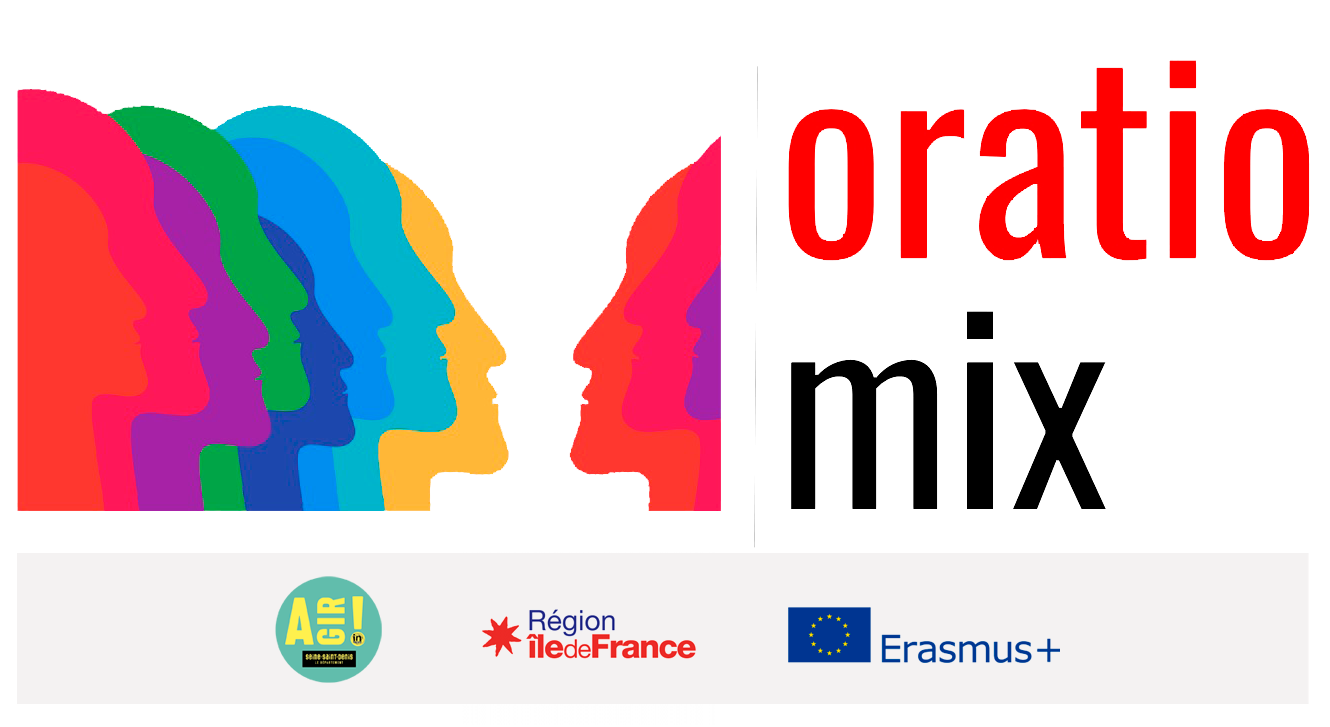Workshop 6 : Version 1 invention writing
Implementation: what do we need?
– paper, felt-tip pens
– A workspace: the room provided must be large enough and arranged in such a way that it can accommodate all participants and allow freedom of movement, the workshop requiring physical commitment.
The participants
The methodology is aimed at primary and sixth grade students, aged between 9 and 13. Ideally, the group should not exceed 30 students.
Speaker
School teacher, educator, theatre teacher
Objectives of this workshop
Strengthen the capacity for individual and collective reflection around a text.
Reinforce the notions of listening, attention to others and debate.
Develop the ability to act as a group.
Time required
90-120 minutes
Implementation
The workshops use techniques of oral expression and debate around a theme related to a source text. They also put into practice, through body expression techniques, the questions theorized by students to allow a global understanding of the issues raised by the text.
Finality
At the end of the session, children will have:
Developed ability to work individually and in groups
Progressed towards acquiring communication skills
Strengthened their critical thinking by sharing and discussing symbolic themes present in their stories.
The practice of new techniques by students will improve their personal development and communication skills.
1. Start session
The clap
In a circle, the children pass a clap to their neighbor. e (one claps in his hands) while making the circle. For the clap to pass, students must look each other in the eye before clapping their hands!
2. Construction of the story
- First, the animator.ice proposes to the students to draw individually the six stages of the story on an A4 sheet divided into six boxes. In the first box, students draw the. a hero. In the second box, the place. In the third, the opponent. In the fourth, the adjuvant. In the fifth, the action. In the sixth, the end of the story.
When the drawings are finished, students arrange them in a circle.
Students must then form 5 or 6 groups (depending on the size of the class to have groups of 5 or 6 students). Each group chooses a drawing, regardless of whether the author. e is in the group or not. - Each group presents the drawing they chose and explains the story they understood. The author. e can then validate or invalidate the proposed narrative.
3. The vote
The objective is now to determine the different elements that will constitute the common history of the whole class.
The animator thus retrieves the 5 or 6 drawings previously selected by the groups of students. Students will then be invited to choose from the different proposals already present in these drawings. They will express their choices through a vote. The facilitator will therefore re-export the different:
hero. s
Locations
Opponents
Friends
Stocks
settlement
5. End of the ritual
Clapping
The. a leader stands opposite the other members of the group in order to be seen by all. He/she positions his arms horizontally and will clap his hands above his head. The others must imitate him at his/her pace. Then, little by little, he.elle will accelerate until reaching applause.
